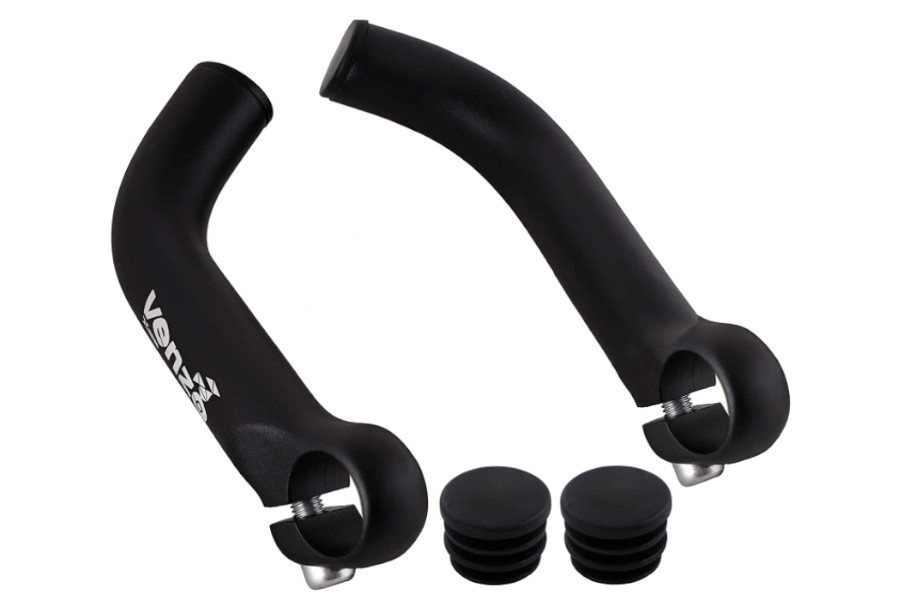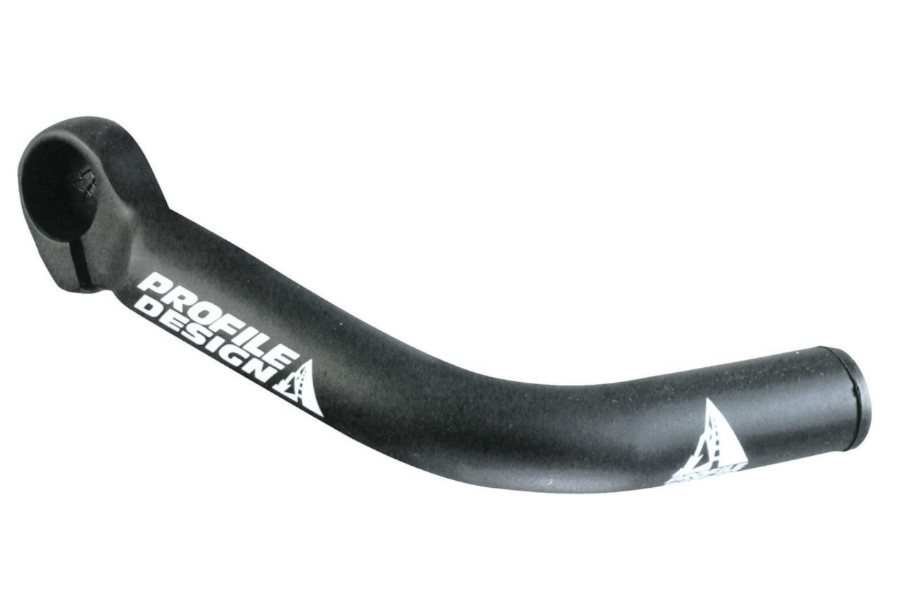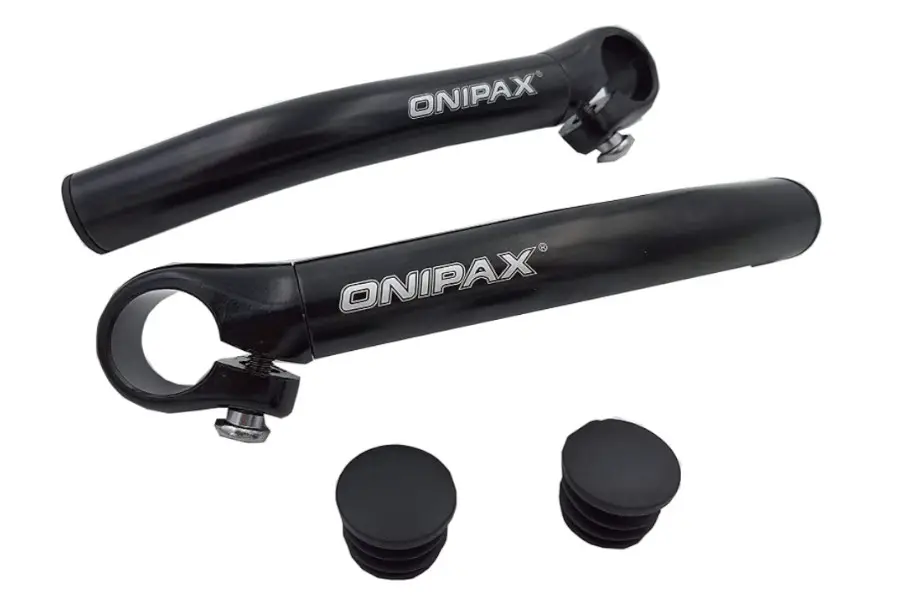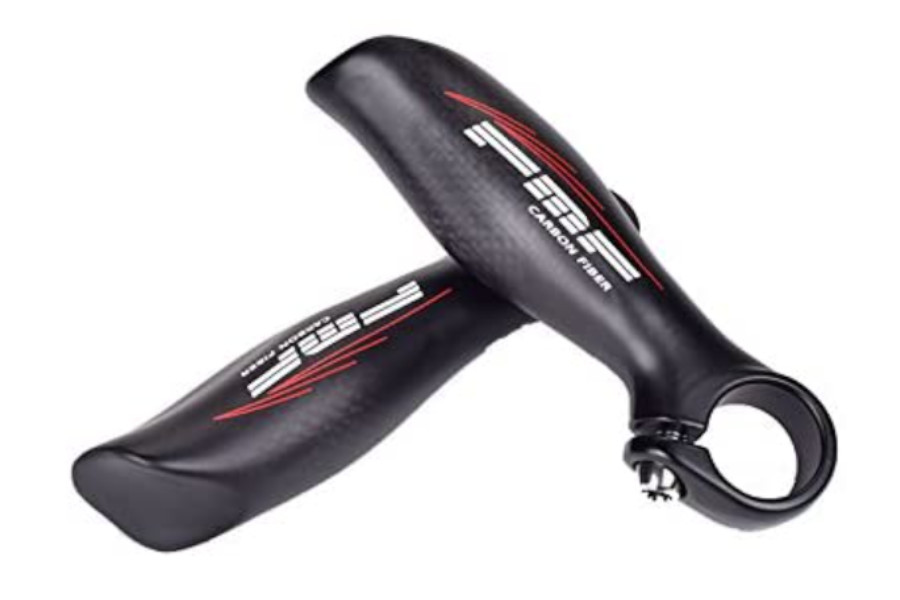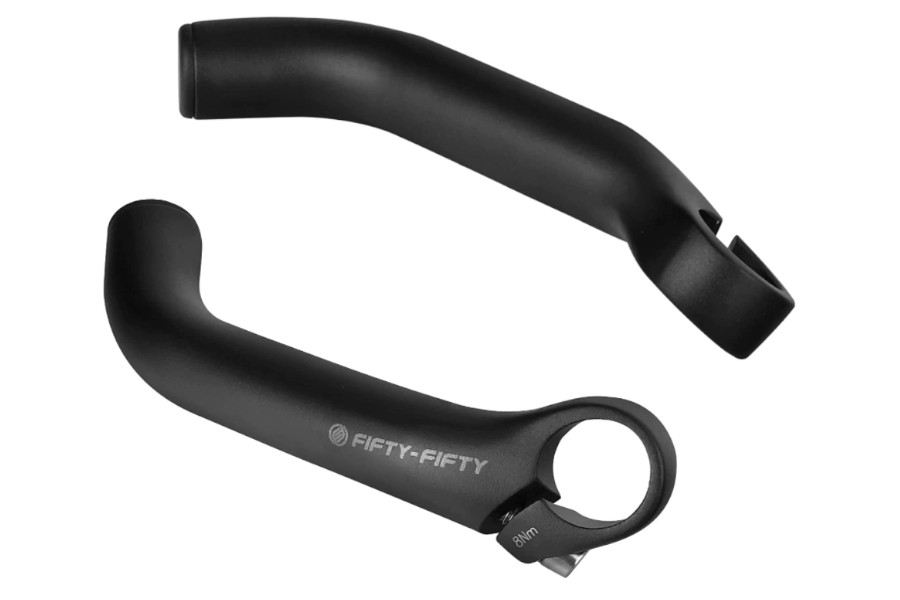Want to upgrade that old mountain bike of yours? Well, here’s the perfect addition for any biker: mountain bike bar ends! These clever additions go great with any bike and promise you’ll be hitting the trails like a pro, in no time.
Knowing why bar ends are such an invaluable addition for any bike will help get you out there faster – so let’s take a look at what they offer: since the early 1990s, many riders have been making customized additions to their bikes as a way of expressing themselves through custom-made hardware such as unique tires or handlebars.
Cycling is a necessary and highly convenient form of transportation. The number of people out there who prefer two wheels over four only continues to grow, probably because it’s just so much easier to navigate congested city streets than, say, an SUV with a heavy machine gun on top!
One of the most important features included in any cyclist’s arsenal is his or her bike accessories. As essential as they may be, entering the cycling world can be a bit overwhelming at times when you look at all of the new and exciting products being offered to every type of bike enthusiast out there. If you’re passionate about cycling and don’t mind trying something different, then take a moment to consider mountain bike bar ends.
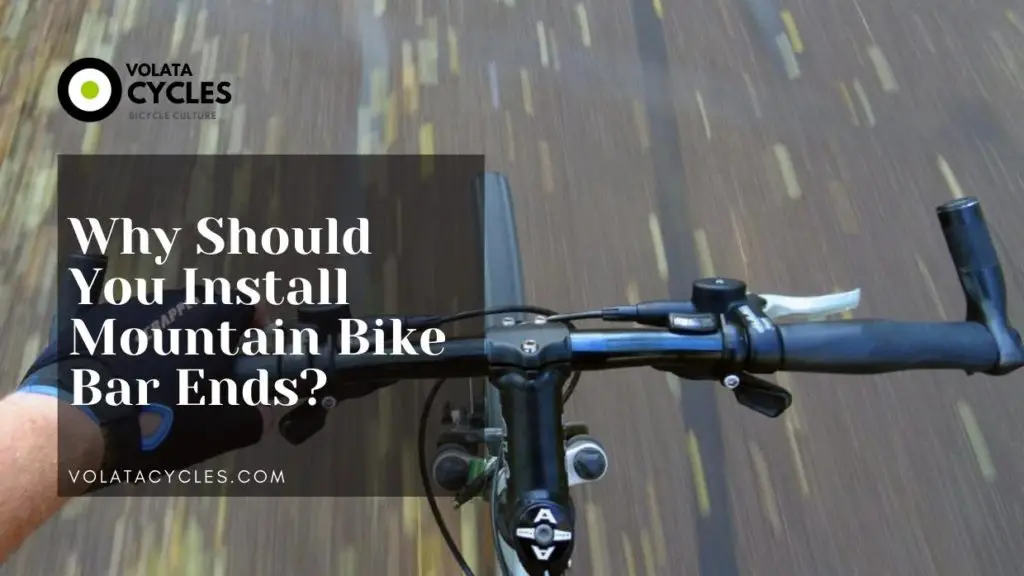
Furthermore, one of the most exciting things about mountain biking is the fact that it’s a sport dedicated to both professionals and amateurs alike. Many of these people are looking for new ways to make their adventures even more exciting, and an easy way to do so is by upgrading your current bike.
Purchasing mountain bike bar ends is one effective way to upgrade your bike. In this blog, you’ll learn about why you might need mountain bike bar ends and some key facts about them!
Why Install Mountain Bike Bar Ends
Mountain bike bar ends are the solution for anyone who’s got exhausted hands, or whose wrists hurt when you ride. This is why so many professionals use them in the first place. The bike accessory works exactly how it’s supposed to!
A must for every cyclist because at some point everyone will experience a sore wrist or chest pain on a long climb… it works by allowing you to rotate your grips forward and get a lower profile which lowers your center of gravity (that alternative center of gravity being your handlebar).
You might think bar ends are not for everyone because they’re not an obligatory accessory, but the fact is that they are perfectly convenient even to seasoned cyclists. Mountain bike bar ends make bike rides healthier, longer, and more comfortable than ever before.
Now, with mountain bike bar ends being a relatively new phenomenon in the long and exciting history of bicycle handlebars, it would be a good idea to get some of the users on the bikes up to date with this before we started going into too much detail.
Now, what are mountain bike bar ends again? You may ask. Well, they are small extensions that go beyond the end of your handlebars predictably resulting in just one thing: extra leverage when riding your cycle. Read on to find out how bar end installation is done on a mountain bike and what are they for.
Mountain Bike Bar Ends: What Are These Accessories?
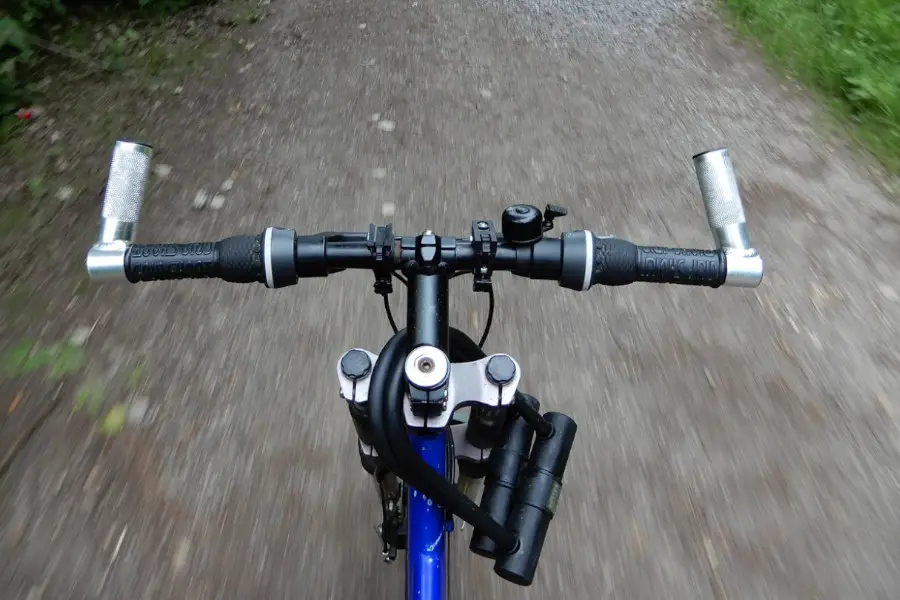
Bikers don’t let things like pieces of metal frame of a bike make them feel intimidated. It’s just an aesthetic, after all! Not to mention, there are tons of accessories that can customize your ride or assist in making it run a little bit better.
You’re here because you want to know what your options are, right? From handlebars, saddles, and risers to chain springs, derailleurs, and rims as well as speedometers, brakes, and tire irons – the variety is pretty intense. It really depends on the manufacturer of the bike you might have seen but mountain bikes can be intimidating at first glance just because they appear like welded pieces of metal.
Mountain bike bar ends are often described as cyclists’ antlers. They look like the bony, repetitive, and odd-looking forms protruding outward from the handlebars of bikes. These extensions are noticeably curving inward, outwards, downward, or upwards in whatever way pleases you most.
Mountain bike bar ends can be made out of a variety of materials, but some of the more popular include carbon steel, aluminum, and titanium. If you are a biking aficionado who appreciates bike modifying preferences – especially when it comes down to appearance – bar ends will appeal to you to an extra special degree if decorated with anything you prefer.
Mountain bike bar ends are an option for some bikes but aren’t a part of all mountain bikes. Because manufacturers offer their own styles sometimes, riders have to buy the bar ends separately and then install them on the handlebars afterward. Mountain bike bar ends seem foreign because they started becoming popular in the early 90s when mountain biking was taking off and have been trendy ever since.
While the general public has had many different perceptions of bar ends in this time, some bikers feel like they need bar ends to complete their bike – while others don’t see how they make biking any easier than it is without them. Either way, Volata Cycles is here to point you in the right direction so you can find answers to your questions about these accessories.
You won’t go wrong if you do an online search for mountain bike bar ends. The results will take you to some official and unofficial stores that sell great bike accessories. But aside from this, which is important in its own way, the rest of your questions can be answered here on this blog.
Top 5 Mountain Bike Bar Ends Reviews
Mountain bike bar ends have been around for a while now, allowing you to get those better grip positions when riding. This means added control and comfort when riding through different terrains. Check out our list of top 5 bar ends below:
Venzo Bicycle Handlebar Extender
The Venzo Bicycle Handlebar Extender extends the current grip position to ease the strain on your arms and hands. Take the pressure off your numb hands, achy wrists, and sore shoulders with this clever design that allows you to reach higher on every upward climb. Designed for easy adjustment of angles according to your riding preferences, handling will be a breeze month after month of great use.
The bullhorn mountain bike handlebar ends are a great way to let your arms stay in position while riding so you can avoid some of the natural wind resistance from wide-grip positions. It’s much easier to ride when your hands are positioned closer together and you don’t have to move your arms as far to get into that position.
These fit on the middle section of the handlebars, right about where they curve towards the neck. If you’re interested in adding these to your bike, it’s best if you take off your handle grip and brake calipers before installing them so they can be slid easily all the way onto your bars. Once they’re on, tighten and replace the brake/shifter caliper as well as the handle grips.
Boxer MTB Bar End by Profile Designs
This mountain bike handlebar end is easy to install, durable, and looks great. The bar end is made from a slightly larger tube than most to allow people to use it without any grips or grip tape. A nice surprise was not just the convenience of having end caps included with the product but also that they’re non-slipped to give even more grip.
Another fantastic feature to mention is this product’s clamping area. It is fairly narrow, compared to other bar ends, yet nonetheless, it’s still remarkably functional. In fact, the quality of its construction makes it quite attractive overall. Moreover, it boasts a smooth transition between the tube piece and its clamping area.
Overall, those factors mean you will be very pleased with your purchase of these mountain bike handlebar ends! They enable you to reposition your hands in several different positions when you’re biking for speed or for hills and mountains for example.
ONIPAX Mountain Bike Bar Ends
If you’re a mountain biker who loves the feel of riding up hills with the wind blowing in your hair and climbing those peaks, having this product can help you enjoy your sport even more. These bar ends are surprisingly sturdy, which has pleasantly surprised many buyers considering how affordable they were.
It will give you two new positions to place your hands so that they don’t have to remain stretched out, instinctively reaching for something to grab onto. You can either rest them above where the end of the actual handlebars are or slightly below it, depending on your preference.
These bar ends have been shown to improve arm leverage as well by moving the hand further away from its shared position with the rest of its team. This allows you to sit upright so that you avoid back or neck discomfort which is inevitable on longer rides without taking any breaks.
UPANBIKE MTB Carbon Fiber Bar Ends
It’s clear that the designers behind these UPANBIKE MTB Carbon Fiber Bar Ends put a great deal of thought into making sure that each and every end was well-made and finished. The gloss carbon fiber is subtle, but it makes a big difference in how well the product looks when compared to other products with a gloss finish.
These bar ends are very light in weight and they will stand up to a hard spill on asphalt without any issue – though we recommend using some carbon assembly gel on them just in case you have issues with fitment during mounting as there are no issues with strength or durability!
FIFTY-FIFTY Mountain Bike Bar Ends
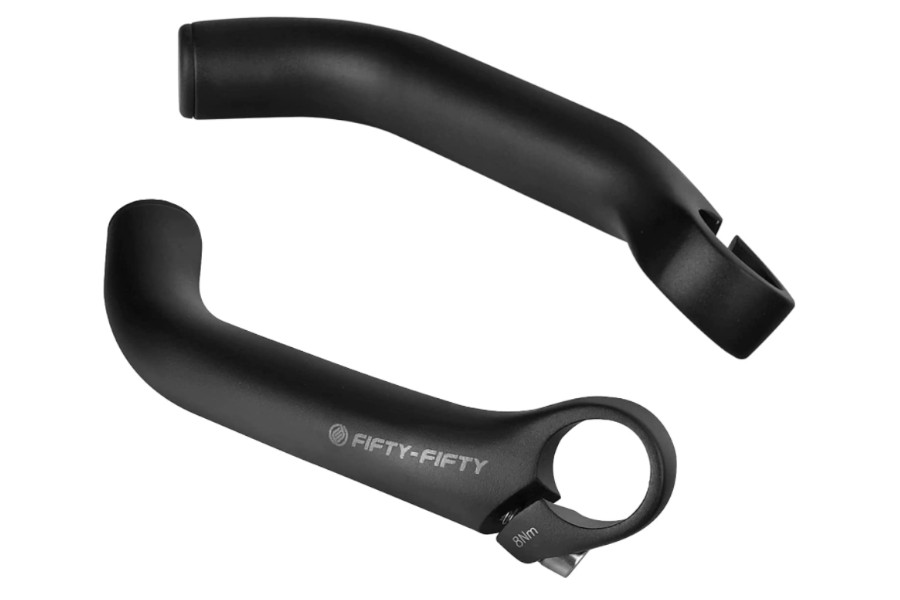
FIFTY-FIFTY began in 2012 after three avid mountain bikers realized there was a big lack of efficient and attractive bicycle handlebar accessories.
As avid bicyclists themselves, the FIFTY-FIFTY team came up with their own innovative mountain bike bar end design that is made from 6061 T6 aluminum alloy, which is a material optimized for lightweight and high strength – giving your bike finesse as well as overall durability.
If you’ve been searching for the next great addition to your biking arsenal, look no further than FIFTY-FIFTY’s Mountain Bike Bar Ends. They’re designed to provide a comfortable and ergonomic gripping experience, making them the perfect way to avoid prolonged hand, arm, or shoulder fatigue during long rides.
Plus, these bar ends are made from shock-resistant materials so you can use them on an uneven surface without worry. Available in three bend options and three different colors that include black, red, and blue. Additionally, they come pre-lubricated with grease so they’ll fit easily over your handlebars during installation.
Mountain Bike Bar Ends Installation Guide
Now that you’re familiar with some of the basics of mountain bike bar ends, let’s move on to the next question: are you aware of how to install them on your bike?
The fact of the matter is there are various sizes and models available. Therefore, it’s important to know and understand prior to installation, your bike will require certain specifications in order for the bar end to fit properly.
Every mountain biker has different needs and requirements when it comes to mountain bike accessories. If you’re looking for information on mountain bike bar ends from an expert in all things biking, keep reading!
The tips you’ll learn here if you’re interested in figuring out what type of mountain bike bar ends will work best for your existing bike come from experts who own bikes and rode them just about everywhere after several years.
- Starting off, make sure that your bike is standing in a stable way so that the installation process will go smoothly.
- The next step in installing mountain bike bar ends involves exposing a part of the handlebars. To do this, you’ll need to slide the grip and brake lever in towards each other, followed by the shifter. The trigger should end up being approximately 0.75 inches from where it was previously. You’ll know if you’ve slid them far enough when your bar ends have a snug fit onto your handlebar- they won’t be too loose or else they won’t stay on at all.
- Next involves removing the grip, whereupon one can expect that the end plug would need to be removed first. To make this process easier, use a small screwdriver to lift or push up on the current grip prior to proceeding with removal by twisting off having completed other necessary steps beforehand before twisting on.
- Then, using pliers or a wrench, move the shift lever towards the brake lever. You will need to adjust it so that there is about half an inch between them.
- Next involves loosening your brake levers and moving them over an inch and a half, either towards or away from the shift levers. Do not tighten this new setup right away.
- Then, you attach the handle grip on the bike again, but first, use a spray and a rag to clean off the handlebar so that there is no dust or residue preventing you from having a good grip.
- After that, move the bar so it is in direct contact with the brake lever which should leave enough room for the throttle grip at least halfway there.
- Now grab the mountain bike bar end and insert it through and secure it in place with a screw wrench.
- Adjust all the necessary parts; sitting on your mountain bike will make it easier for you to figure out a natural position for your hands and where the handlebars should be.
- Make sure that the bar ends are not very high. To do this, set your mountain bike on the floor and sit on it, then adjust your seat height according to what is comfortable.
- For a better grip, most cyclists prefer that the bar ends at their bikes be – an angle that’s more inclining than depression. So loosen the bolts and slide them in your desired direction. Afterward, tighten till fully secure.
- Then, make the right adjustments on the brake and shift lever while sitting on your bicycle. The most important thing to remember is to make sure that they are both within reach should you need them! Furthermore, find a comfortable position so as to minimize physical discomfort when you’re riding your bike.
- For bicyclists who use twist-grip shift levers rather than rapid-fire shifters, making the proper riding adjustments will differ a bit. For this reason, it’s important that you study your handlebar set and its features to know how to go about the installation process of mountain bike bar ends. The next step is choosing the best tools for the job.
Benefits of Mountain Bike Bar Ends
Using mountain bike bar ends is an accessory that will only make your biking experience more enjoyable. You’ve just recently learned how to install them, but now you’re wondering – do other bikers like them as much as well?
If you have been addicted to bikes for some time now and have seen a wider selection of accessories, then you certainly must have asked yourself the following questions:
- Why should I invest in mountain bike bar ends?
- How are they going to improve my cycling experience?
- Do I really need them?
Well, you’ll find these questions easy to answer if you’d consider taking a look at the history of cycling in general. Of course, humans have been riding bicycles for many years, but bikes didn’t really improve much until large-scale production became popular and companies started to experiment with different designs.
In a nutshell, modern bicycles have changed quite a lot over time, which can be attributed to several different factors including an increase in demand and more creative minds who like to tinker with things they buy themselves.
When you have a bike, it is as if you just have a product of what technology brings with it into the world. You can say that about the wheels, axle, steering/seating, spokes, cog set, brakes, or dynamo that power your bicycle for example.
The whole point here is to talk about these things in comparison to how they were first invented and how they consequentially developed into some fundamental features of a modern-day bike.
Biking with bar ends (also called climbing horns) is normal these days, on road bikes and mountain bikes. Climbing horns are often fixated on straight handlebars for the rider’s comfort. It is also common to have them only temporarily fixed on a bike definitively destined for several trips.
Back in the 90s, bar ends were huge, then handlebars came back into style and made them pretty much obsolete. And even though they’re a big part of cycling history, you should note that in some countries you need special equipment to use bar ends due to safety concerns. Below, we’ll examine what those concerns are and how they affect use in different parts of the world.
Installing bar ends is essential for cyclists of all types and at various levels. Now, the next thing that we want to point out is what having mountain bike bar ends do after the installation process. Below tells you how this bike accessory functions.
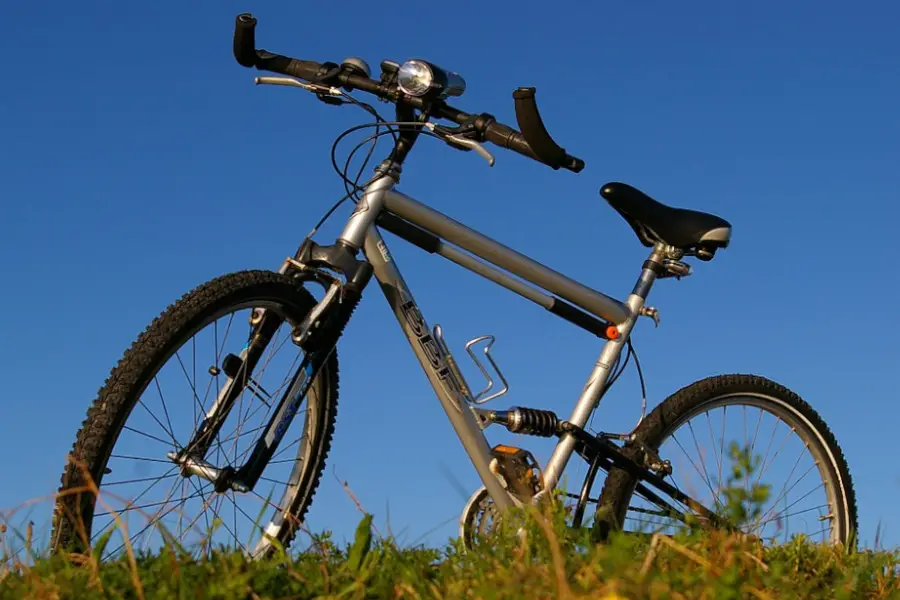
Keep Your Hands’ Positions at Optimal Levels
While most cyclists may feel that bar ends are mainly utilitarian devices, they play a more significant role nonetheless, preventing riders from experiencing discomfort. They are situated on the end of all handlebars and can be used in a variety of ways to provide support and stability during competition if you find that your hands are reaching an uncomfortable level.
They also help keep your hands’ positions at optimal levels when riding over long periods without assistance or if you’re in a particularly strenuous situation such as a hill climb where you’ll feel pressure on the reins but won’t be able to rest while continuing to pedal.
Moreover, mountain biking can be very stressful on your hands. They tend to get swollen and tired. With a mountain bike bar ends installed however, you won’t notice this occurring as much because they help place your weight on the bicycle instead of only putting pressure on your fingertips. For example, it is easy to rotate your hand 90 degrees in one direction without needing to stretch them out or reposition yourself within your bike.
Have a Unique Look
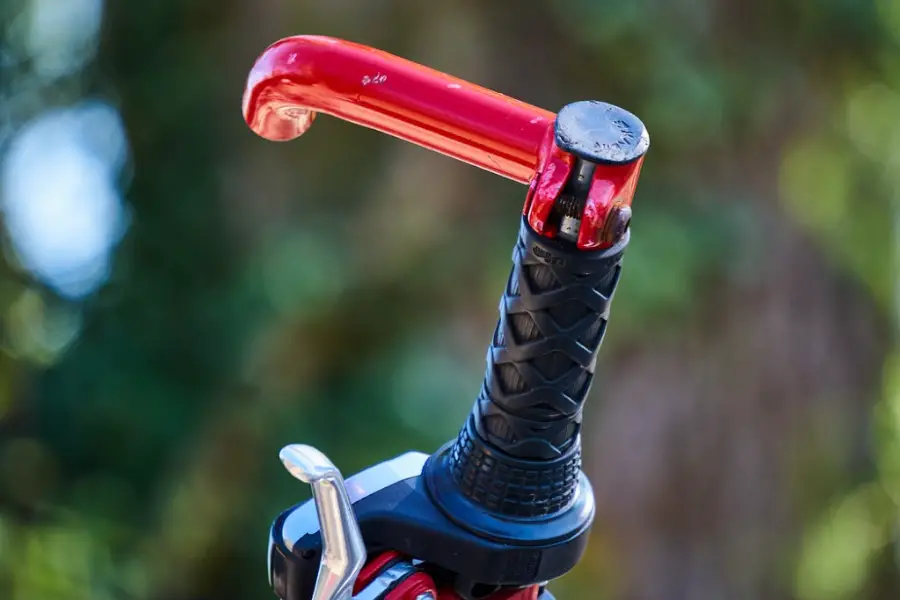
Fitting mountain bike bar ends to your handlebars may be more a case of customization than one of durability, as bar end designs have been more or less neglected over the years due to changing trends in mountain bike design. That said, there’s every chance that one day their unique look will once again begin to influence new models from the big bicycle brands.
Whether you choose bar ends for the sake of fashion or functionality, remember that it’s all about giving your bike its own individual look, which will, in turn, enable you to have longer control over it without having your position on the bike change too drastically.
Riser bars were once commonplace; however, they slowly fell out of favor and are now seeing a comeback. Bar ends are likewise undergoing a similar cycle as they may become less popular than when introduced but we imagine they will make their return to popularity once again in the years ahead. It’s easy to see why some people want either one of these modifications on their vehicles.
Increase Leverage
One way to make riding uphill not so much of a challenge is to find levers that can help you get more power behind each and every pedal stroke. Bar ends serve this purpose well by letting cyclists apply more pressure and easily pull themselves up inclines.
With your hands positioned on the bar ends, slightly push your weight down, increasing force on the pedals to turn them. The mechanical advantage comes from having so much leverage – meaning how your body’s weight is positioned as it relates to the physical orientation of the handlebars – in this case, further away from the wheel due to handlebars being higher than a normal handlebar position would be.
Biking uphill is usually more difficult than going downhill, whether in traffic or on a trail. Riders experience more strain and exhaustion when pedaling uphill as opposed to downhill due to the decrease in speed and increase in heart rate.
Use as a Bike Repair Lift
All the way from your kitchen utensils to your bike, you can use those durable mountain bike bar ends in a lot of creative ways. Keep your bike off the ground and out of sight when you need to make repairs by using bike hooks out of them. While at it, mountain bike bar ends keep precious bike components like forks and stems protected from scratches and curbs. It’s also great for protecting carbon bars, too.
Improve Aerodynamics
Another great reason to install bar ends is that they make your aerodynamics faster. It’s like a getaway when you’re riding flat, fast trails. We sometimes call it an added boost in momentum, which is more pronounced when sitting up just a little bit higher on the saddle and pedaling especially hard.
Even though a sprint isn’t the key player in Fast and Furious, it definitely plays an important role in bringing you to your destination quickly. Once you find a comfortable riding position, it feels a lot like cruising around on a high-end sports car instead of being crammed into an old, rickety rickshaw that jostles through every bump along the road.
Keep Yourself at the Peak of Fitness
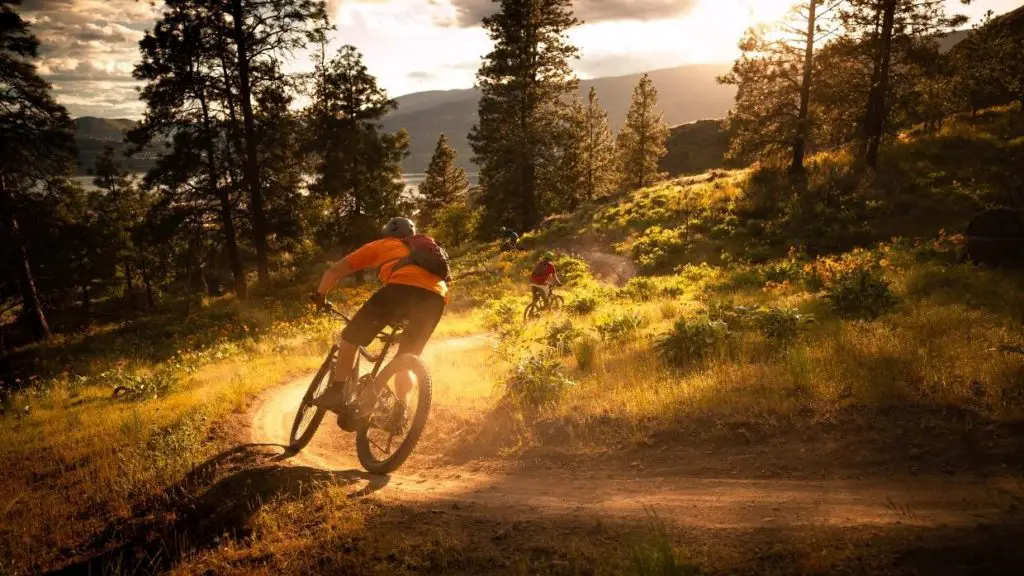
Cycling up a steep hill can be exhausting, even if it’s something you do daily. This is why it’s important to make sure you keep yourself at the peak of fitness so that you’ll know how to tackle hills in your riding area when they come up unexpectedly.
A great way to help stay fit when you’re cycling is by investing in bike accessories like mountain bike bar ends which will allow you to add weight on the front wheel so you can get a better grip and traction with your tires and maneuver more easily through difficult terrain like that brick-paved road uphill.
Therefore, it is essential that you change up the weight distribution. Moving the center of gravity over the pedals will make cycling more balanced and easier to ride uphill because there’s not as much pressure on your arms.
It would be terribly difficult to cycle uphill on a light bicycle with only handlebars to guide you—you’d feel overwhelmed. So it makes an immeasurable amount of sense that you “shift” your body forward on the bicycle seat as you climb or decrease in altitude (or climb back down after you’ve reached a certain height).
MTB Bar Ends Buying Guide
You might be tempted to just rush out and buy the first mountain bike bar ends you come across, but it’s super important to do a little research beforehand so that you can find—and thoroughly consider—the kinds of bar ends that would work best for your budget.
You’ve most likely seen a bar end before, perhaps it was on top of your friend’s bike or you saw it just hanging off the side of the wall at your local bike shop.
However, putting your money where your mouth is and actually putting out that cash for this hand mountain bike accessory may have seemed uncertain to you before. Perhaps because you wanted to learn more about these kinds of luggage attachments or maybe you weren’t sure if they were useful at all.
These days, it’s hard to find the real deal when you’re dealing with rumors. For example, you might have heard that bar ends are out of style and are no longer useful, which is just plain untrue!
Mountain bike bar ends are a fantastic investment for you particularly if you’re an avid biker who goes out on the trail frequently but also want that extra comfort during strenuous rides.
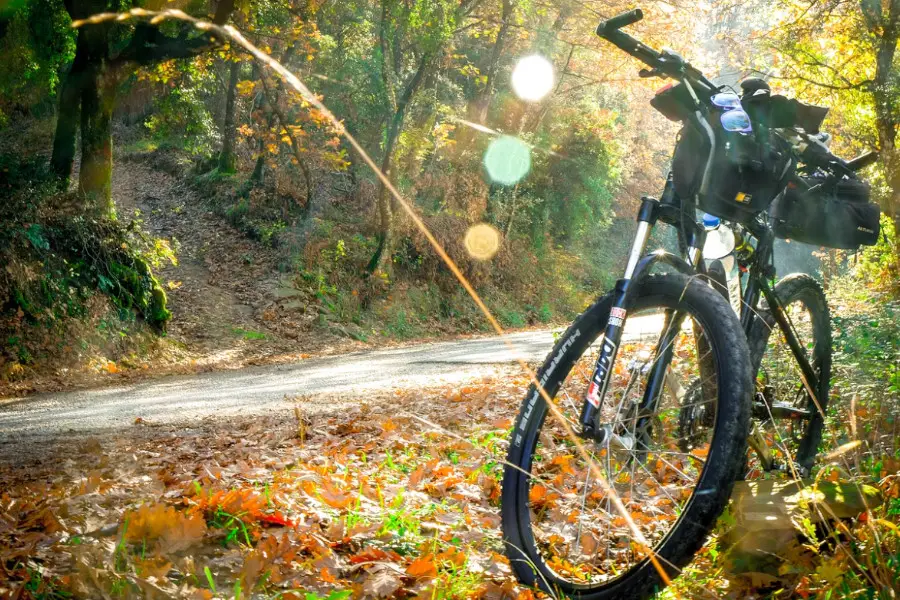
Finding the best bar end is not always an easy challenge as there are many options on the market and one can easily get confused or swayed by sales pitches, but the following tips should allow you to make the right choice without any trouble:
Cost
When it comes to bar ends there is actually such a great variety – not only in types of bar ends but also in their quality! Bar ends come in different shapes and sizes, priced affordably or high-end, these being far sturdier than lower-end models and often crafted with careful attention to detail.
Whether you’re planning on rock climbing, trail riding, bunny hopping, or doing freeride/downhill (or even if you’re into BMX), bar ends can help enhance your capabilities and make your experience even more exciting so be sure to check out only the best.
So mountain bikers are best off going with high-end products from manufacturers who have proven themselves again and again through their experience in the field. You really want to look for craftsmen who value quality over quantity no matter what brand you go for – because if you’re going to be rocking these bar ends on your bike, then you’ll want them to last as long as possible!
Brand
When you go shopping for a new bike part, always have your favorite brand in mind. Take this time to try out different bar end brands so you can make the best decision.
Because when seeking out a pair of bar ends for your mountain bike, you aren’t left with simply one choice to pick from. In fact, there are many different types in the world of accessories for a mountain bike, but only some make it to the top ten list as some of the very best.
There have been a number of specific brands that have proven themselves time and time again such as UPANBIKE, Venzo, ONIPAX, Profile Designs Boxer, or FIFTY-FIFTY bar ends. You can also find these products at leading bike stores online.
Material
The variety of materials that purpose-designed mountain bike handlebars are crafted from can lead to confusion – which is the right one for you? Carbon fiber, aluminum, titanium, and brass offer a range of benefits over their rivals such as stainless steel, but the price will always be determined by these factors: Does it feature a hollow core or solid construction?
In general, are you looking for a light end that’s likely to flex in impact or something more rigid? It all depends on your personal preference. As with everything in life, there aren’t any rules here! Ultimately a little research before choosing a material should tell you what type of mountain bike bar ends fit best with the rest of your bike frame and budget.
Width
Another factor that you should take into account when purchasing your mountain bike bar ends is the width. Some are thin while others are wide and thick, but something riders commonly do is experiment with them a bit before making a decision about which to go for.
Experimenting means trying to see if a narrower bar will give you better control or not by taking it for a spin around the street or plusher with thicker grips so you can grip them in your hands.
Design
When it comes to choosing the perfect accessory for a bicycle, there are several things to consider aside from its overall functional design. A key factor in product selection comes down to how appealing or off-putting the aesthetics might be.
One thing you should always look for in mountain bike bar ends, whether they lean slightly this way or that is ergonomic functionality. Most importantly, regardless of their specific curves or bends (and it is possible to accidentally bump your hands against them if you’re not paying attention!), it should be easy for you to change the position of where you hold on by simply twisting a bit at that area.
MTB Bar Ends Safety Concerns
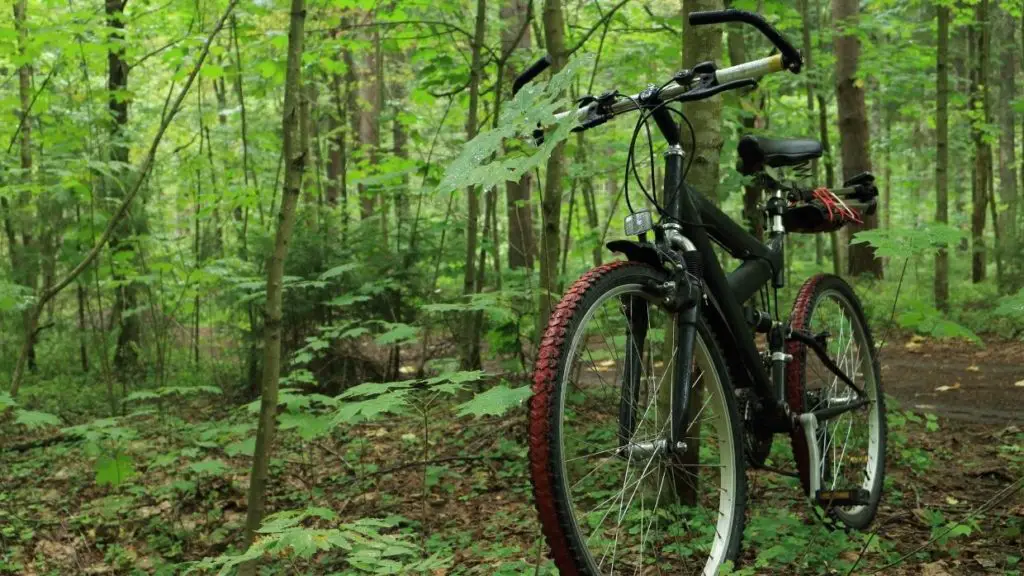
As a cycling enthusiast, you might already know that there are possible risks involved in cycling that go beyond having to deal with car drivers who may have had too much coffee. With regards to cycling, mountain bike bar ends could pose a risk if they break and the broken one goes flying across the road while you’re on a ride.
Ever since the advent of bar ends, there has been a lot of buzz surrounding them. A popular topic to debate over is how they’re a big risk and can cause serious harm if you fall over while riding your bike.
For example, imagine falling into one end of the bar end, right by the hook! It’s unfortunate but also very possible, even when thinking about it. Some say that bar ends pose risks even greater than their on-bike convenience would indicate – which is why we suggest looking for alternative ways to jazz up your ride with simple accessories instead.
Speaking of risks though, one must also take into account the other parts of your bike – do check regularly for broken chains or punctured tires – otherwise it may result in your accident as well.
Restricted Hand Movement
Some mountain bikers feel that they are more in control and more agile when they move their hands around while on the handles. The bar ends go against that feeling of freedom, however. Suddenly a restriction is placed on hand movements.
What that means is they’re much less likely to potentially lose control of the trail with their hands locked into place. In addition, reaching for levers and triggers will be delayed especially during emergency braking situations when it matters most.
Getting Hooked to Another Cyclist’s Bar Ends
The news about changes to a ban on the controversial bar ends, especially in high-intensity endurance events such as competitive cycling is so heartening.
Some people are still ignorant of its dangers despite the fact that a rider might come into contact with the object jutting from their competitor’s handlebars and get caught in their hot zone or worse yet, lose focus and end up crashing into another cyclist.
That is greatly heightened when taking into consideration the ongoing problem of cyclists using the drop bars during races often necessitating road rash. While it is crucial to maintain awareness of the conditions and other bikers on shared trails, it’s equally important for people to ride safely as well.
In general, if you’re riding side by side with three or more cyclists, it’s probably a good idea to have your handlebars not too close to any others surrounding you.
Hooking to a Tree
Mountain bike bar ends are meant to help cyclists control their bikes while they’re steering, but in order to do this effectively, you have to figure out if they should be positioned at the front or back of your bike. This is a step that many cyclists overlook and are surprised by when they get on their bike because it feels completely different than it did before.
The placement also makes them prone to getting hooked into any nearby tree branches. Imagine yourself riding a mountain bike through the woods with branches slapping against your handlebars – suddenly being hooked into one is an uncomfortable and dangerous experience that could take you off course from what you intend to do.
When going for a ride, check out the terrain and keep an eye out for any opportunistic protruding branches from nearby trees. And if you happen to spot such a tree, remember to never make sudden movements that would result in being caught by the branch you didn’t see in time. So bikers, be sure to weigh the pros and cons of installing bar ends on your bike. Ask yourself whether or not you need bar ends.
The Popularity of Mountain Bike Bar Ends
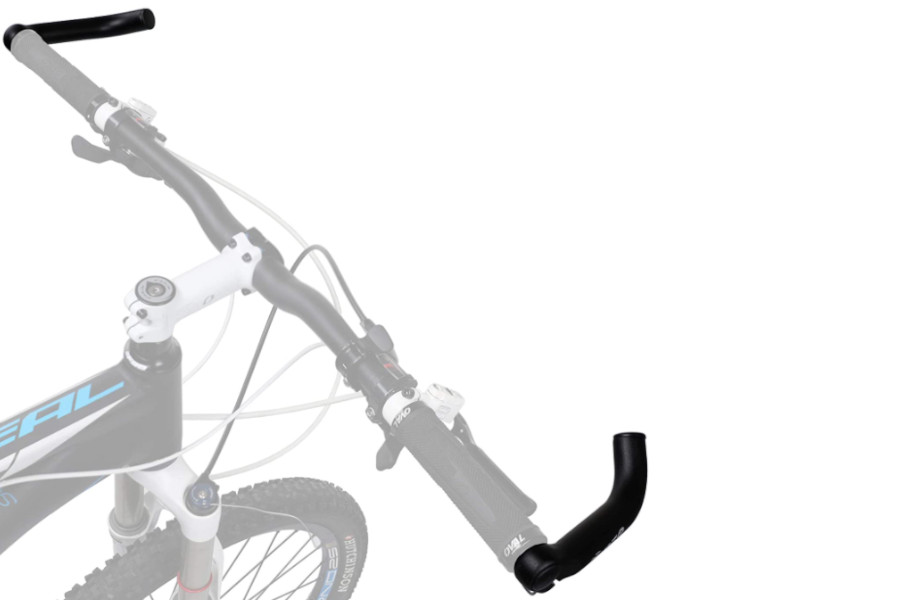
While every mountain bike accessory is not created equal, many of them do have things in common. For example, some of them cannot be legally ridden on roads leaving many riders confused about the standards and rules surrounding these often confusing cycling products.
Mountain bike bar ends have a long and winding history leading to a lot of controversy around what some people believe or don’t believe in when it comes to the origin of these custom mountain bike accessories. Let’s say drop bars and drop-in variants for example were said to be inspired by other types of handlebars like riser bars.
Though this may not always be the case, most bar ends do in fact come with handlebars that are straight. It’s worth noting, though, that even curvy stems generally feature straight handlebars. But don’t let that fool you: You can still change the position of handlebars, which makes them really handy to have after all.
In the early 90s, bar ends were getting more popular as time goes by. Although they’ve always seemed to be present on bikes since the late nineties, it wasn’t long after that we noticed dwindling attention to bar ends and a renewed interest in rise bars returning once again amidst changing tastes amongst bikers and enthusiasts alike.
Many riders who grew up using bar ends have since realized how useless they are because rise bars have become more popular than ever. And although it may seem like a strange phenomenon, there’s actually nothing wrong with those who still enjoy them because everyone has their own style, right?
Some bikers may have ceased using bar ends over time, but they still have their uses today. Newer riders may think that they aren’t necessary when you can simply grab the handle to control your bike’s movements if you aren’t comfortable with bar ends.
However, those who want a more laid-back experience without too much effort may still find it worth getting these items for extra versatility, especially for those hill climbs on workouts where your back tire might slip or slouch without your knowing.
You don’t need to listen to other people who say that these are an antiquated item. You should try them out for yourself and experience what others had felt in the past – fun is not always about braking easily!
Today’s mountain bikes are user-friendly with full fork suspensions. Getting off the saddle during competitions is certainly not the norm anymore, and when it comes to pedaling up a hill, you can sit comfortably on your new bike.
These days it’s all about sitting and pedaling forward, with very little effort put forth by the rider. The majority of people who purchased custom bicycles would agree that they feel at peace on the road cruising down a hill without having to hurt themselves by hunching over a handlebar for extended periods.
With their dual roles as both cycling and non-cycling accessories, bar ends can be the most pivotal of investments when it comes to having a fully functional biking outfit. Take, for example, the situation where you want your bicycle to rest on a stand made for that purpose. Without bar ends, it’s likely that other parts of your bike may slip from their place over time such as your speedometer.
Frequently Asked Questions
Should Mountain Bikers Be Using Bar Ends?
Mountain bikers no longer use bar ends. Bar ends disappeared from mountain bikes in the late nineties due to advanced technology on the riser handlebar’s part. Today, mountain bikes are equipped with wide risers that provide additional leverage when climbing a hill, which is something bar ends were designed to help riders do efficiently.
What’s the Purpose of Mountain Bike Bar Ends?
You’ll love the advantages of a mountain bike handlebar extension. These device attachments stabilize your ride and provide excellent leverage when you conquer inclines. Now, no matter what time of year it is, or what your weather conditions are doing, you can get on your bike and feel confident that the extension will do its job!
Are Bar Ends Still Used in Modern Development?
Unfortunately, yes. But even the biggest fan of bar ends would admit that they are very much in the minority when it comes to visual appeal! Some individuals may still have cattle-prods attached to their handlebars, but for most cyclists and especially racing cyclists, a remnant from the late 1800s is not something that’s considered ‘stylish’ or desirable. If anything, it’s an eyesore.
How should bar ends be angled?
The traditional 45-degree angle is a good starting point for some riders due to the ease with which a rider can get their pointer finger over the lever. The angle allows for a straight and easy entry into the lever, without being too much of a stretch nor too close to reaching.
Conclusion
What do you picture when you say ‘mountain biking’? Maybe death-defying acrobatics on a bike in the woods or a skillful rider swinging his body around with their bicycle, controlling it expertly at tricky angles?
Well, that’s certainly how we like to think of riding a bike! Although it’s safe to say that mountain biking isn’t for everyone. Still, it’s not without its own set of challenges. When done incorrectly, you could easily slip off the tree roots and unexpected bumps and end up sliding down the road.
It’s true that each individual has their own varied opinion regarding the use of bar ends. As an experienced biker, you know this to be true. At times, bar ends can be helpful and at other times it can be dangerous for your biking experience.
We hope that you’ve been enjoying learning about all the different uses of mountain bike bar ends. It’s great how these little pieces of metal can help so much on both mountain bikes and in anywhere you go. In the future, more people are likely to start using them, since there are a lot of comforts involved with using them.
It can be very hard to win a debate about why you need bar ends. This tends to lead to a lot of arguing and bickering, but if you read between the lines, you’ll find that there are very good reasons for having them on your bike!

